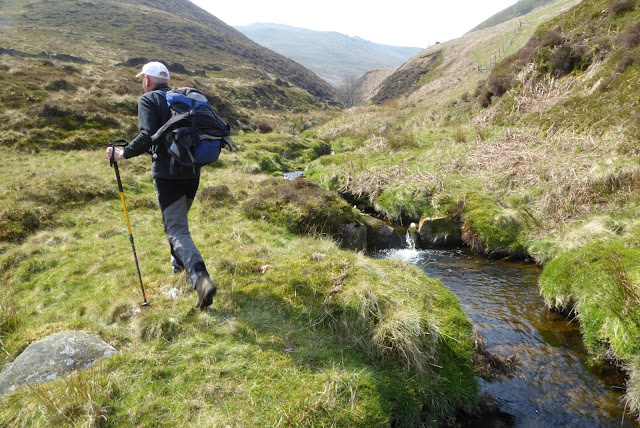And the quintessential gritstone crag is Stanage Edge, close to Sheffield on the eastern border of the Peak District. For those lucky enough to live close by, climbing on summer evenings facing the setting sun is one of life's greatest pleasures.
Stanage Edge is home to more than 1500 different climbs along it's 4 miles length. None of them are high as the crag rarely gets above 20 metres. They're packed in a few metres apart wherever a visionary climber has spotted an unclimbed line. These days there are few lines left unclimbed with the potential for new routes and most those are at the hardest end of the range of climbing difficulty.
 I've always wanted to put my name to a new climbing route, to be the first to spot and climb a line and to name it. A few weeks ago I noticed a few metres of what looked like lovely climbing up the top few metres of of a buttress next to where I was belaying for Jill. The rock below this was 'occupied' by another harder route but it looked possible to reach the nice finish via a traversing line below an overhang. Like the finish this traverse wasn't mentioned in the climbing guidebook. So that was around 10 metres of potential unclimbed route. I could reach the start of this climbing using the start of an existing route.
I've always wanted to put my name to a new climbing route, to be the first to spot and climb a line and to name it. A few weeks ago I noticed a few metres of what looked like lovely climbing up the top few metres of of a buttress next to where I was belaying for Jill. The rock below this was 'occupied' by another harder route but it looked possible to reach the nice finish via a traversing line below an overhang. Like the finish this traverse wasn't mentioned in the climbing guidebook. So that was around 10 metres of potential unclimbed route. I could reach the start of this climbing using the start of an existing route.This all looked worthwhile. Instead of climbing existing guidebook routes next time we went out it was pioneering. My friends all stood back to leave me the opportunity to be the first. I took a while over the existing start and then spent a while longer fixing protection for myself in case of a fall. Stepping out onto the unclimbed line felt exciting and steepish; my weight was on my arms and again I took too long fixing more protection. I got into a steep groove where a high step took me up below the finishing section but my arm muscles had turned to jelly and I fell off, caught by my rope and belayer.
A week later I was back and this time, with foreknowledge, the route felt like a breeze. In a short 15 minutes I was at the top. My first ascent was followed by my friends. It's difficult to be objective but it feels as though it's a good addition to Stanage's climbs. It only remains for me to get it added to the next published guidebook.
And I get to name it. It was climbed on an evening when we were socialising in the name of Fidel Sciamanna. It's called "Fidel's Curry Night".









